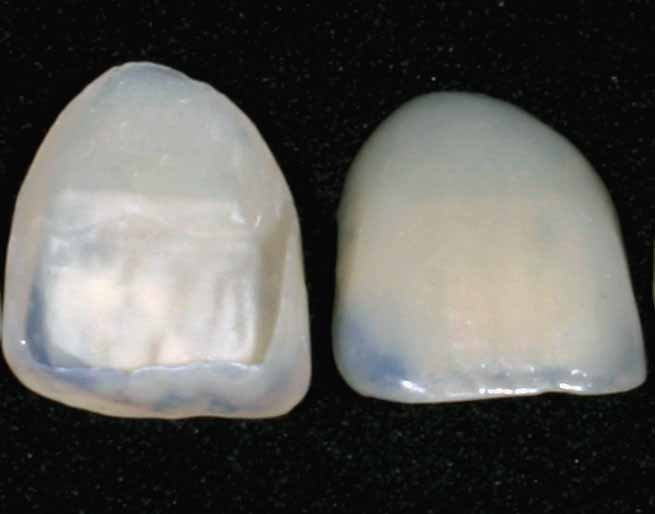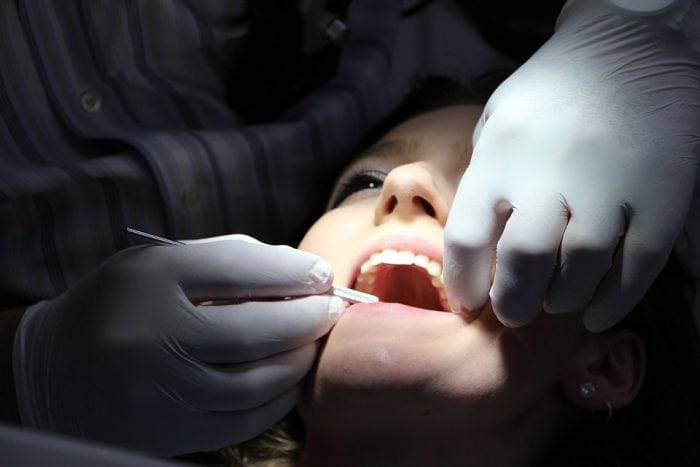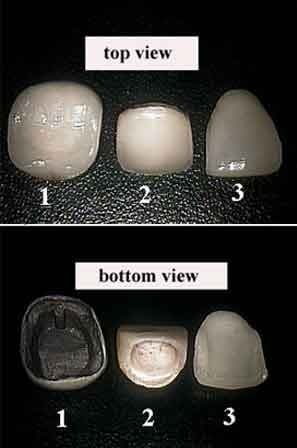
Dental veneers are small, thin shells intended to cover the front surface of the tooth, improving the tooth’s appearance. Dental veneers are sometimes called dental porcelain laminates or porcelain veneers. The dental veneers are custom-made to correspond to the design, shape, and color of the patient’s tooth, and improve things like the shape, length, size or color of the tooth when applied.
What Are Dental Veneers?
Dental veneers can be made out of either resin composite materials or out of porcelain. While porcelain veneers have a superior stain resistant quality when compared to resin veneers, the resin veneers can be a better choice for some people. Patients should discuss their options with their dentist to determine the best choice for them.
The intended use of dental veneers is to repair cosmetic or structural issues with one’s teeth. Dental veneers are frequently applied to improve the appearance of teeth that have been warped or discolored. Teeth may become discolored due to surgical procedures like root canals, from drugs or staining due to tetracycline, overuse of fluoride, or from the presence of large resin-based fillings. Veneers also help improve teeth that have been worn down from use, broken, chipped, been misaligned or are irregularly shaped. Veneers can sometimes be applied to teeth with large gaps between them to reduce the space between teeth as well.
The Process Of Getting A Veneer
The process of getting a veneer is usually carried out over a few trips to the dentist. The first visit is usually a consultation, while the second is necessary to make the casts and the third will see the veneers applied. The process of placing a veneer on a tooth goes through three different steps: diagnosis, preparation, and application.
The diagnosis phase involves speaking with the dentists and explaining your desires. Patients will need to communicate what they hope to achieve with the veneers. The dentist will examine your teeth and determine what your options are when it comes to veneers, as well as discuss what the limitations of the veneers are and what the procedure will involve. The dentist may also choose to make an impression of your mouth or take x-rays.

Photo: rgerber via Pixabay, CC0
Preparation for a veneer involves removing some of the enamel, an amount approximately equal to the thickness of the veneer, which is usually about half a millimeter of enamel. The dentist will apply a local anesthetic to numb the area and prevent pain before taking off the enamel. An impression of the tooth will then be taken and sent out to a dental lab, which will then use the impression to construct a veneer that fits your tooth. It usually takes between 2 to 4 weeks for the lab to create the veneer and sent it to the dentist.
The application stage of the veneer is when the veneer is permanently affixed to the tooth. Before permanently attaching it the dentist will use a temporary bond to examine the color, shape, and fit of the veneer on your tooth, and trim it if necessary to ensure the proper fit. To prepare a tooth to receive a veneer the dentist will prep the surface of the tooth by polishing it, cleaning it, and etching it if necessary. The etching is done to texture the surface of the tooth, which helps the bonding agent adhere to the tooth and keep the veneer in place. Once the tooth has been prepped, the veneer will be placed on. After placing the veneer, a beam of light is shined on the veneer that stimulates the chemicals in the cement and causes the mixture to “cure” or harden in place quickly, affixing the veneer to the tooth. After this, the dentist will remove any excess cement, and make sure that your bite is proper. A dentist may have a patient return in a couple weeks for a follow up that checks how the teeth and gums are responding to the placement of the veneer.
Pros And Cons Of Veneers

Photo: By Jeffrey Dorfman – https://www.nycdentist.com/more/dental-photos/, CC BY-SA 3.0, https://commons.wikimedia.org/w/index.php?curid=18867222
Pros Of Using Veneers
The advantages of using veneers include: a better look for the teeth, stain resistance, and a less invasive approach to changing the look and shape of a tooth.
Veneers are a less invasive, more conservative approach to changing the shape and look of a tooth. Crowns are another option, yet they are frequently more expensive. If porcelain veneers are used, dark teeth can often appear whiter. Porcelain veneers are often stain resistant as well. Another bonus to using porcelain is that gum tissue tends to tolerate porcelain well when compared to other materials.
One of the primary advantages to using veneers is that they don’t need any unique care after being placed in the mouth. An individual may brush their teeth, floss their teeth, and use mouthwash as normal.
Cons Of Veneers
The disadvantages of using veneers include: they can’t usually be repaired if they crack or chip, the color cannot be changed once applied, they are frequently more expensive than composite resin bindings, they may chip or degrade quickly if one grinds or clenches their teeth.
It’s important to remember that the process of getting veneers can’t be reversed. Veneers aren’t usually repairable if they crack or chip, and they are frequently more expensive than bondings made out of composite resin. The application of veneers may also leave one’s tooth sensitive to cold and hot because some of the enamel has been removed. Veneers may also fall off or become dislodged. While this isn’t very common it can happen to those who grind their teeth, clench their teeth, or chew on hard objects like ice or pencils.
Another limitation of veneers is that unless the color of the veneer matches your teeth exactly upon placement, not much can be done to match the color. The color of the veneer is permanent, so if one wishes to whiten their teeth, they should do so before getting veneers applied. Finally, veneers can still decay over time, which may eventually necessitate a crown over the entire tooth. Dental veneers also have a lifetime of around 8 to 15 years, and after this time passes they will need replacement.
Alternatives to dental veneers include the use of crowns or composite resin bindings. Individuals who wish to have the shape or look or their teeth noticeably changed, though not enough to require a crown, may want to use a veneer. While the cost of a veneer will change based on your individual needs and where you live, in general, veneers run from approximately $1000 to $2000 a tooth.








